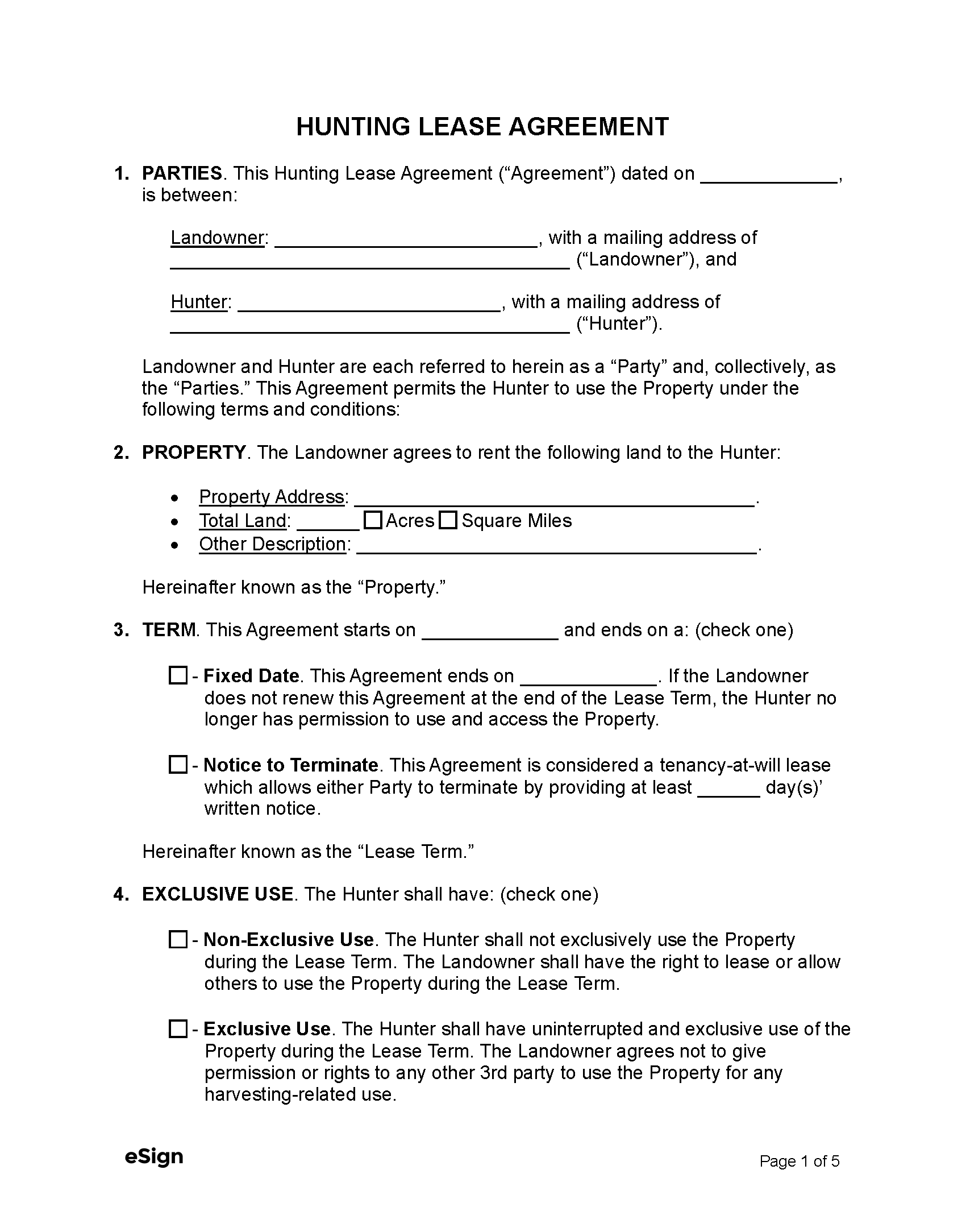Document Features
- Length of Term – Enables the landlord to define an end date or stop the lease with written notice.
- Exclusivity – Establishes whether the hunter has the sole right to use the property for hunting or if the landowner can lease to other hunters during that time.
- Payment – States the total amount the hunter owes for access to the property, either as a one-time or monthly payment.
- Camping and Guests – Outlines the rules for camping and bringing other hunters on the property.
- Hunting Guidelines – Specifies which animals can be hunted and what methods can be used.
Licensing Requirements – Landowners should contact their state’s hunting or wildlife agency to determine if specific licenses are needed for hunting leases. In Texas, for example, private landowners must purchase a lease license to rent their property to a hunter.[1]
How a Hunting Lease Works
A hunting lease creates an arrangement where a hunter pays a landowner to access and hunt on their property. The following information should included in the completed document:
Hunting Area – Landowners will need to identify the specific area where hunting is allowed. It’s standard to state the property’s size (in acres or sq. miles) so hunters can gauge the amount of game that might be available.
Lease Term – The lease term determines how long the hunter can access the property:
- Short-Term – A low-commitment option that allows landowners to rent to multiple hunters throughout the year.
- Long-Term – Typically lasting one to three years, long-term leases offer a steady source of income while avoiding the need to find new hunters as frequently.
- Seasonal* – Another short-term option, a seasonal lease grants access to the property for an entire hunting season.
*Hunting season dates vary depending on factors like the animal type, region, and hunting practices. Landowners can learn about their state’s hunting seasons by contacting their local hunting or wildlife agency.
Payment – Like any rental agreement, a hunting lease must define the rent payment. Prices are usually determined based on the total huntable area, the property’s location, the quality of game, and whether the hunter has access to running water, electricity, and other amenities.
Hunting Restrictions – Landowners might want to limit the species of huntable game, which is often legally required to conserve wildlife populations. They can also impose rules on harvesting methods and the hunter’s ability to camp or invite guests on the premises.

